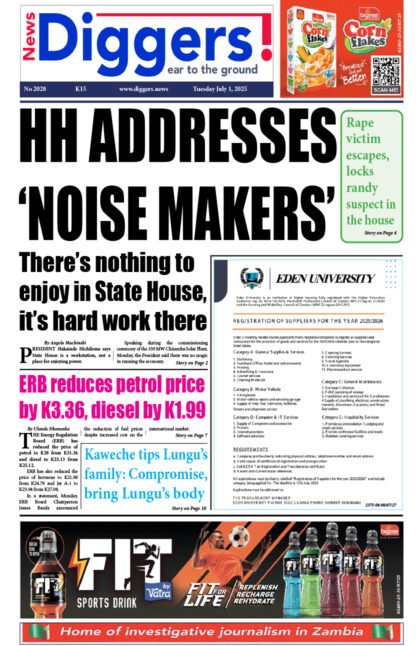Pump prices for petroleum products have been on an upward trend in recent times, a rise which has been increasingly pronounced in the last two months, where the prices of Petrol and Diesel have risen by K4.4 and K6.6, per litre, respectively. This has had far-reaching ramifications for the entire economy, spanning consumers, transporters, producers and commuters; manifesting itself in a steady climb in the inflation rate now sitting at 12.6%. Wide sections of the economy have had to contend with escalating transportation and production costs as a direct consequence of volatility in energy markets, the effect of which has been a slow erosion at hard-fought gains with respect to macroeconomic stability.
The upsurge is attributed to two factors, namely, decisions taken by OPEC+ (Organization of Petroleum Exporting Countries), primarily its two largest members Russia and Saudi Arabia as well as the poor performance of the Kwacha. Focusing on the first of these, OPEC is an organization that enables the cooperation of leading oil exporting countries as a means of influencing the market and maximizing profit. In 2016, this cartel was extended with the inclusion of an additional 10 members, one of whom was Russia. In early September, Russia and Saudi Arabia announced extensions of their cumulative voluntary oil production cuts of 1.3 million barrels per day to the end of the year, sending crude prices to a 10 month high. These actions have been in an attempt to raise crude prices on global markets.
Zambia, having no known reserves of oil, is import dependent for its fuel requirements. With Government restricting its role in this market to an oversight function, domestic prices are now guided by market forces, allowing Oil Market Companies to make a reasonable return whilst ensuring steady supply to consumers. Notwithstanding the rationale for private sector led energy markets, what safeguards have policy makers instituted with a view to creating stability in pricing and where can improvements be made.
Firstly, it was widely regarded that a significant cause of inefficiencies in the fuel procurement chain was the infrastructure at Indeni and to a certain extent the state of the TAZAMA pipeline. Prior to Indeni being converted to an Oil Marketing Company, it received crude oil which would be refined and later distributed across the country. However, with the refinery’s inability to operate at full capacity, costs of production tended to be high. By importing processed crude, however, these inefficiencies are obviated. This also lessens the burden of transporting finished crude by road, which is not only costly in terms of wear and tear on the road network, but comparatively more expensive. Indeni being relegated to a more secondary role also signifies the Government’s desire to have a private sector-led fuel supply chain. As is widely known, the private sector operates on a profit motive which requires keeping costs low also translating in lower prices for consumers.
Still on Indeni, amongst its future operating parameters has been identified, the blending of biofuels with gasoline and diesel. According to the Energy Regulation’s Board (ERB) Energy Sector Report 2022, work had begun on converting the decades old facility in this regard. This represents an innovative method of reducing domestic crude requirements, with blended fuels proving just as effective as conventional fuels not to mention leading to more efficient engine performance. This generally comes in two forms; ethanol and biodiesel blending. With respect to the former, the ethanol is mixed in specific proportions with gasoline, the most typical of these being in a 1:9 ratio, respectively. Whilst this intention has been made clear by the Government to begin blending fuel, little has been released in the public domain of progress in this respect.
I will end my article by outlining other alternative policy actions that will enhance the functioning of the petroleum sub-sector. Zambia currently consumes about a million litres of fuel per day, as reported by the Lusaka Times. When matched against our installed storage capacity this translates into a 30 day purchasing cycle, whereas the ideal timeframe should be around 90 days. Very little has been expressed on efforts to increase this storage capacity, besides converting Indeni into a storage facility. I believe, in conjunction with other interventions, more resources should be directed at this function.
In ending, fuel is cardinal to moving the wheels of any economy, Zambia included. Presently, the Zambia petroleum sub-sector is riddled with numerous inefficiencies. This coupled with an external environment marked by significant volatility, exposes these vulnerabilities extensively. Concerted efforts must be instituted at the highest level for measures that will cushion energy prices in the short term and safeguard the stability of the supply chain over the long term.
The Author is an Economist and Member of the Economics Association of Zambia



















